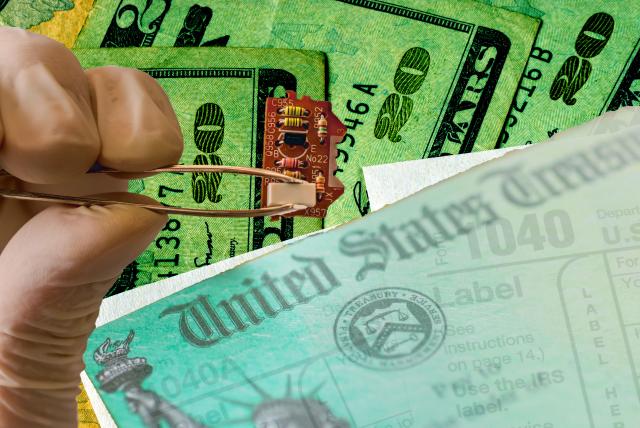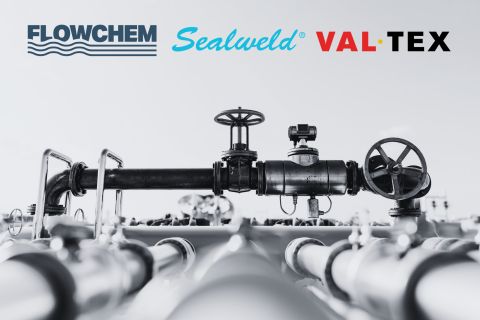
(Image Source: Mary Holcomb, HartEnergy.com)
Innovation is at the heart of transformation in the oil and gas industry, but it can be an expensive undertaking for companies. In 1981, the Research and Development (R&D) tax credit was created to support and incentivize these activities, but lack of knowledge surrounding the qualifications to claim the credit has left the opportunity underutilized.
“In an environment where we’re faced with becoming a greener and more sustainable planet, innovation can help move us in that direction and the research credit can help to pay for that innovation,” Hervé Amar, president at Ayming, said.
Ayming, an international business performance consultancy, recently released its “Benchmark 2020” report comparing global R&D tax incentive schemes. The U.S., among the 15 countries examined, has one of the broadest definitions as to what qualifies as R&D, thus widening the claimant pool, according to the report.
The U.S. offers two different R&D incentive methods: the Regular Research Credit (RRC) and the Alternative Simplified Credit (ASC). Both are mutually exclusive, but the ASC is the primary method used.
According to the report, the ASC Method is an incremental and non-refundable tax credit and equals up to 14% on the excess of current year Qualifying Expenditure (QE), over 50% of the average Qualified Research Expense (QRE) for the prior three years. In addition, 36 of 50 states offer a tax credit of up to 15% of incremental increases in QRE over three previous periods.
The IRS expects taxpayers to have a readily available report detailing the claim building process and methodology, eligible expenditures, eligible projects and eligible activities, along with records to substantiate the claim, the Ayming’s report noted.
Some qualifying costs the report highlighted are salaries of U.S. employees including support staff (for staff who spend more than 80% of time on qualified activities, 100% of their salary is eligible); U.S. subcontractors; equipment depreciation; materials; supplies; and basic research payments.
“The qualifications would be, for example, instead of taking wages or your supply expense as a deduction or capitalizing those expenses over a period of time, you would convert that into a credit calculation which is more lucrative and reduces your taxes at a higher level,” Amar said.
Petroleum, mechanical, electrical and most other engineers utilized on the project are considered qualified personnel for the credit. Welders, fabricators and CAD designers are also among that group.
Furthermore, the qualifying activities span from upstream down to services to include new field development, offshore structure design, drilling and completion designs, pipeline design and construction, wastewater treatment solutions, rig builders and downhole tool design, and environmental testing and remediation.
“This credit can provide valuable funding to companies who need a competitive edge. They’re probably already doing the activities that qualify for the credit, but aren’t taking all of the credit that they are eligible for or taking the credit at all,” Amar said.
In February, the IRS provided guidance and safe harbor for business that claim carbon capture credits as a means to reduce emissions. This follows a push by Occidental Petroleum Corp.—among other energy companies seeking to use the tax credit for carbon capture—for Congress to expand on the details to implement the credit.
Per the new guidelines, companies can gain tax credits for every metric ton of carbon dioxide captured using carbon capture equipment. Companies qualify for the break if they complete 5% of an eligible project or begin significant physical work by the end of 2023, according to the Carbon Oxide Sequestration Credit form.
The tax credit is available at both the federal and state level with approximately 40 states offering an R&D credit to offset state tax liability, accounting company Moss Adams LLP reported in 2019. There is no limitation on the amount of expenses and credit that can be claimed each year.
The application process requires a two-page form summarizing expenditures to be claimed, but no pre-approval is needed, the report detailed.
In addition, for a company to know if it qualifies for the credit, the first step is an assessment by experts in the field. Followed by proper documentation and a collection of “contemporaneous technical and financial supporting evidence” for the IRS audit which can be “aggressive, complex and long.”
However, the added complexity is a result of both federal and state level incentives the report noted.
“Small companies can qualify and even start-up companies that may not have revenue are eligible to deduct as much as $250,000 a year in their payroll tax,” Amar said. “For large companies, there is no cap on the credit…it can be a very lucrative credit.”
Historically, the R&D tax credit was meant to help the U.S. economy after the early ’80s recession, as companies could use the opportunity to create jobs, invest in new products and grow their operations. Following a few expirations and extensions, the opportunity still stands with the potential of savings around the thousands to even the millions depending on a company’s cost to innovate.
“Innovation is what is required to transform the oil and gas industry and the R&D credit can help pay for that substantially. Companies need to understand how much they qualify for, so they can budget for it,” Amar said.
Recommended Reading
California Resources Corp., Aera Energy to Combine in $2.1B Merger
2024-02-07 - The announced combination between California Resources and Aera Energy comes one year after Exxon and Shell closed the sale of Aera to a German asset manager for $4 billion.
Equinor Brings Solar Plant Online in Brazil
2024-03-08 - Equinor says the Mendubim solar plant will produce 1.2 terawatt hours of power annually.
Select Water Solutions Bolts On Haynesville, Rockies Assets for $90MM
2024-01-31 - Select Water Solutions Inc. added disposal and recycling capacity in the Haynesville Shale and the Rockies across three acquisitions in January.
SCF Acquires Flowchem, Val-Tex and Sealweld
2024-03-04 - Flowchem, Val-Tex and Sealweld were formerly part of Entegris Inc.
Weyerhaeuser, Lapis Energy Enter Carbon Sequestration Exploration Pact
2024-02-29 - The exploration agreement covers 187,500 acres across three states with five potential carbon sequestration sites.





